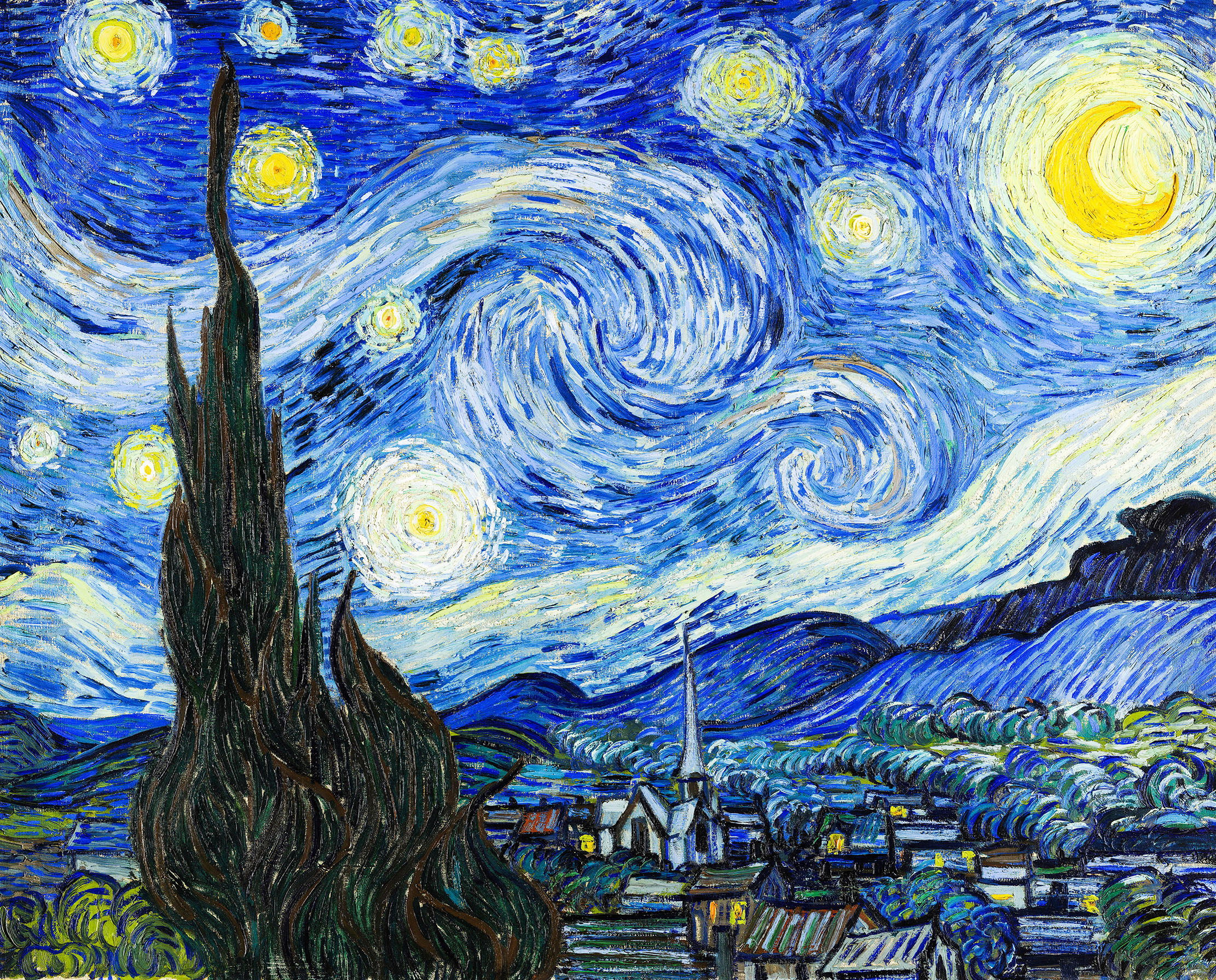My Favourite Painting: Emma Bunce
The head of the Royal Astronomical Society chooses Vincent van Gogh's classic image,The Starry Night.


Emma Bunce explains her choice, The Starry Night by Vincent van Gogh
‘As a physicist, I am drawn to space, fascinated by the universe, and it’s clear that van Gogh was, too. His technique is captivating — brush-strokes thick and noticeable, his style far from photorealism.
‘What I admire most is his ability to achieve visual simplicity from something so complex. Where my challenge is to understand the night sky scientifically, his was to represent it artistically; the similarities between his work and scientific images taken by NASA’s Juno spacecraft at Jupiter are accidental, but striking .’
Professor Emma Bunce is the head of School of Physics and Astronomy at the University of Leicester and president of the Royal Astronomical Society.
John McEwen on van Gogh and The Starry Night
Van Gogh’s happiest year was at 87, Hackford Road, south London, working for Goupil, the Paris-based art dealers of which his uncle, Vincent, was a partner. He was 20 and had fallen in love with Eugenie, his landlady’s daughter. He yearned to achieve the ultimate fulfilment of becoming a loving husband and father, but she rejected him and wilderness years followed. Drawing was a consolation, a talent ‘that can be of great value to him,’ his mother wrote.
His younger brother, Theo, a more successful Goupil employee, was convinced that van Gogh could be a great artist. Their sister disagreed: ‘I think it would be much better if he thought himself just an ordinary being.’
Eventually, Theo persuaded him of his vocation. Van Gogh stayed with him in Paris, studied ferociously and made contacts. Even for Theo, it was a relief when he left for Provence in 1888: ‘My home life is almost unbearable’. Van Gogh remained dependent on him for money and materials.
In Provence, he fulfilled his artistic potential, largely unrecognised in life. The warm south entranced van Gogh and he thought his new pictures ‘might really break the ice in Holland’. He planned ‘a starry night with cypresses’, not painted until he entered Saint-Rémy’s asylum following his 1889 breakdown. He had a ‘studio’ room, but Starry Night shows his bedroom view (plus Saint-Rémy village). The brightest star is Venus. He did not send the picture for sale to Theo and later referred to it as a failure.
Exquisite houses, the beauty of Nature, and how to get the most from your life, straight to your inbox.
In his wilderness years, he tried evangelism in a Dutch mining district. The starry firmament always seemed to him God’s wondrous beneficence and eternal, universal, surveillance.
Country Life is unlike any other magazine: the only glossy weekly on the newsstand and the only magazine that has been guest-edited by His Majesty The King not once, but twice. It is a celebration of modern rural life and all its diverse joys and pleasures — that was first published in Queen Victoria's Diamond Jubilee year. Our eclectic mixture of witty and informative content — from the most up-to-date property news and commentary and a coveted glimpse inside some of the UK's best houses and gardens, to gardening, the arts and interior design, written by experts in their field — still cannot be found in print or online, anywhere else.
